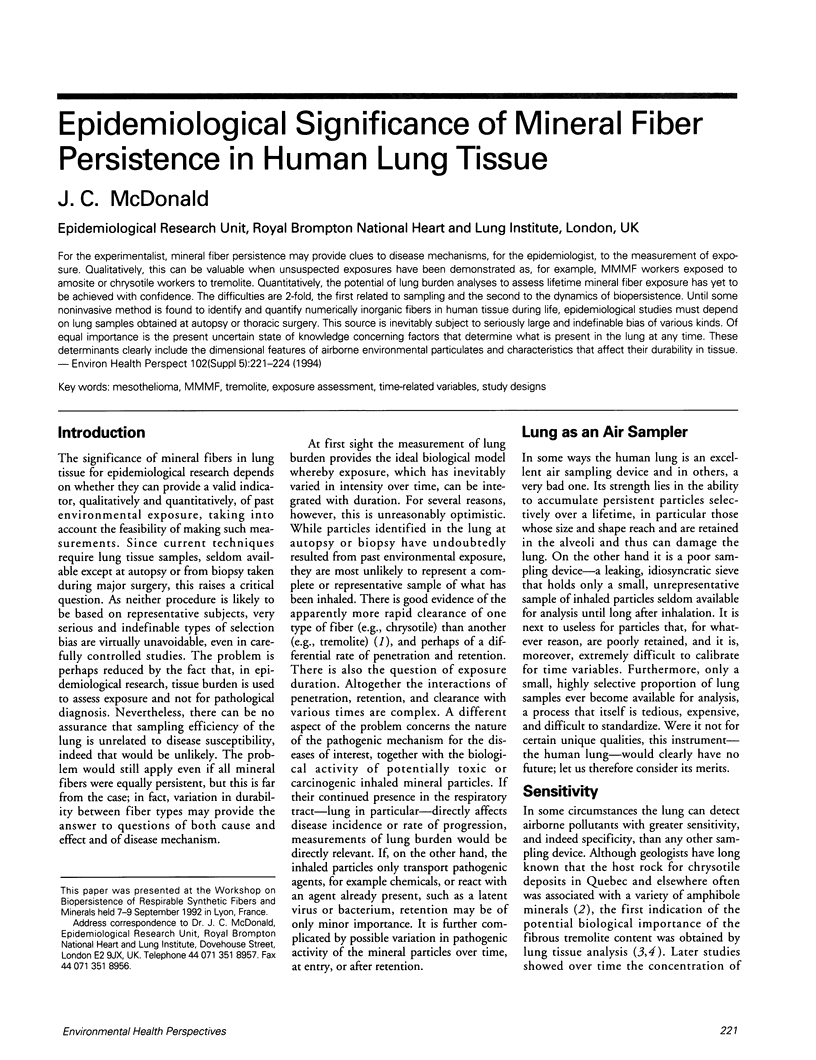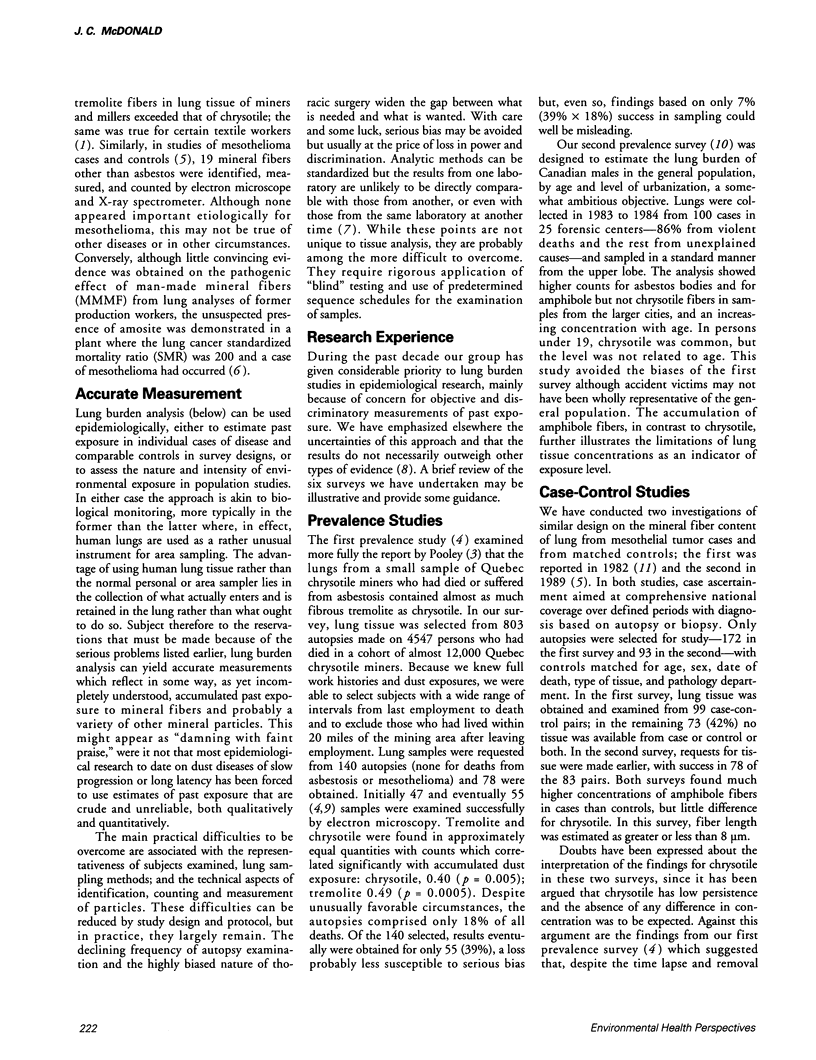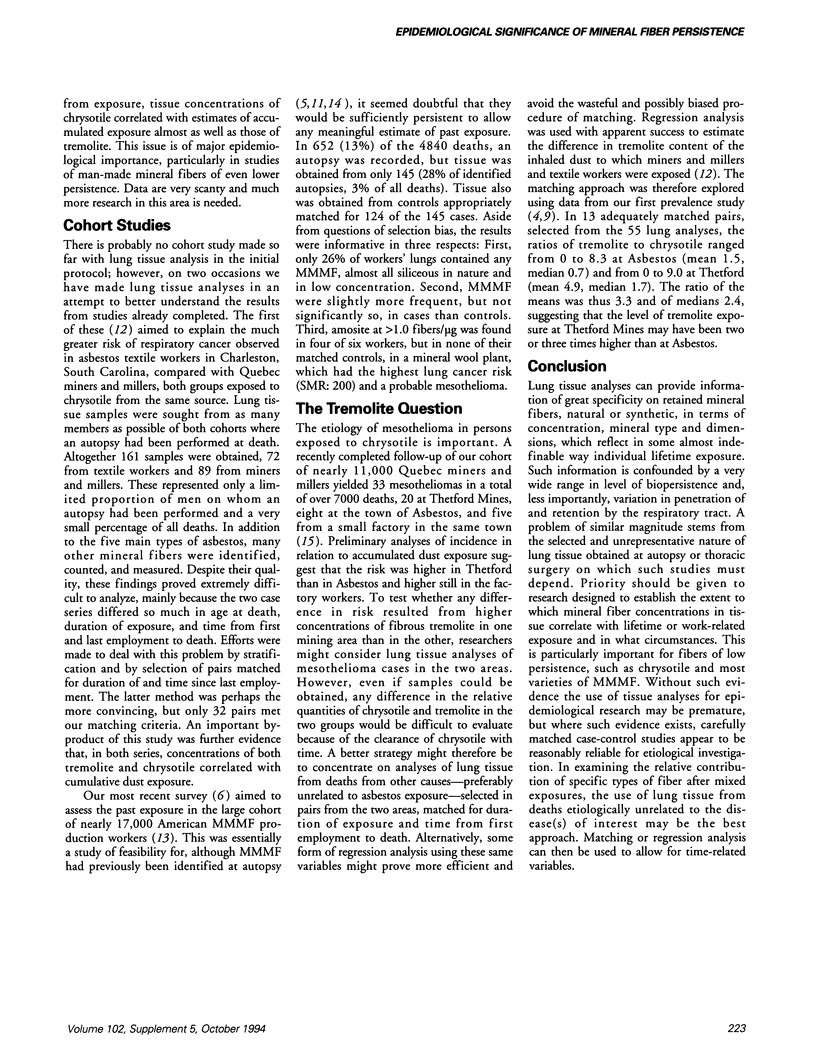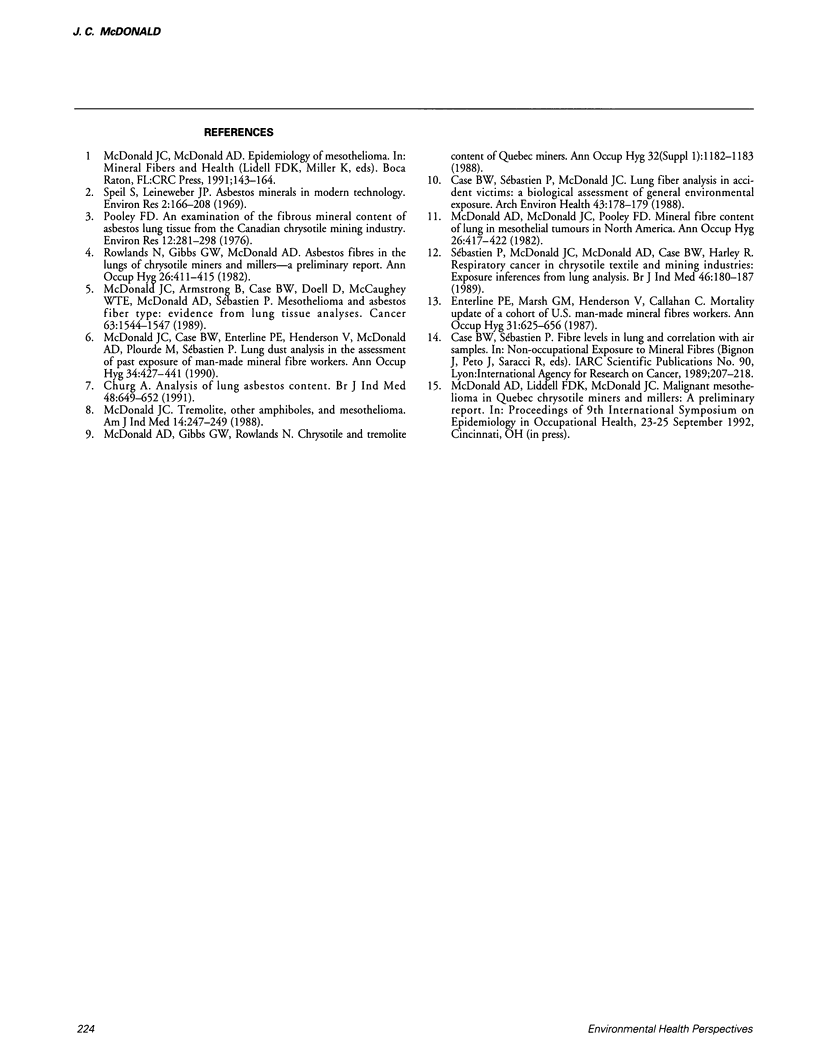Abstract
For the experimentalist, mineral fiber persistence may provide clues to disease mechanisms, for the epidemiologist, to the measurement of exposure. Qualitatively, this can be valuable when unsuspected exposures have been demonstrated as, for example, MMMF workers exposed to amosite or chrysotile workers to tremolite. Quantitatively, the potential of lung burden analyses to assess lifetime mineral fiber exposure has yet to be achieved with confidence. The difficulties are 2-fold, the first related to sampling and the second to the dynamics of biopersistence. Until some noninvasive method is found to identify and quantify numerically inorganic fibers in human tissue during life, epidemiological studies must depend on lung samples obtained at autopsy or thoracic surgery. This source is inevitably subject to seriously large and indefinable bias of various kinds. Of equal importance is the present uncertain state of knowledge concerning factors that determine what is present in the lung at any time. These determinants clearly include the dimensional features of airborne environmental particulates and characteristics that affect their durability in tissue.
Full text
PDF



Selected References
These references are in PubMed. This may not be the complete list of references from this article.
- Case B. W., Sebastien P., McDonald J. C. Lung fiber analysis in accident victims: a biological assessment of general environmental exposures. Arch Environ Health. 1988 Mar-Apr;43(2):178–179. doi: 10.1080/00039896.1988.9935849. [DOI] [PubMed] [Google Scholar]
- Churg A. Analysis of lung asbestos content. Br J Ind Med. 1991 Oct;48(10):649–652. doi: 10.1136/oem.48.10.649. [DOI] [PMC free article] [PubMed] [Google Scholar]
- Enterline P. E., Marsh G. M., Henderson V., Callahan C. Mortality update of a cohort of U.S. man-made mineral fibre workers. Ann Occup Hyg. 1987;31(4B):625–656. doi: 10.1093/annhyg/31.4b.625. [DOI] [PubMed] [Google Scholar]
- McDonald A. D., McDonald J. C., Pooley F. D. Mineral fibre content of lung in mesothelial tumours in North America. Ann Occup Hyg. 1982;26(1-4):417–422. [PubMed] [Google Scholar]
- McDonald J. C., Armstrong B., Case B., Doell D., McCaughey W. T., McDonald A. D., Sébastien P. Mesothelioma and asbestos fiber type. Evidence from lung tissue analyses. Cancer. 1989 Apr 15;63(8):1544–1547. doi: 10.1002/1097-0142(19890415)63:8<1544::aid-cncr2820630815>3.0.co;2-g. [DOI] [PubMed] [Google Scholar]
- McDonald J. C., Case B. W., Enterline P. E., Henderson V., McDonald A. D., Plourde M., Sébastien P. Lung dust analysis in the assessment of past exposure of man-made mineral fibre workers. Ann Occup Hyg. 1990 Oct;34(5):427–441. doi: 10.1093/annhyg/34.5.427. [DOI] [PubMed] [Google Scholar]
- McDonald J. C. Tremolite, other amphiboles, and mesothelioma. Am J Ind Med. 1988;14(2):247–249. doi: 10.1002/ajim.4700140223. [DOI] [PubMed] [Google Scholar]
- Pooley F. D. An examination of the fibrous mineral content of asbestos lung tissue from the Canadian chrysotile mining industry. Environ Res. 1976 Dec;12(3):281–298. doi: 10.1016/0013-9351(76)90038-4. [DOI] [PubMed] [Google Scholar]
- Rowlands N., Gibbs G. W., McDonald A. D. Asbestos fibres in the lungs of chrysotile miners and millers--a preliminary report. Ann Occup Hyg. 1982;26(1-4):411–415. [PubMed] [Google Scholar]
- Sebastien P., McDonald J. C., McDonald A. D., Case B., Harley R. Respiratory cancer in chrysotile textile and mining industries: exposure inferences from lung analysis. Br J Ind Med. 1989 Mar;46(3):180–187. doi: 10.1136/oem.46.3.180. [DOI] [PMC free article] [PubMed] [Google Scholar]
- Speil S., Leineweber J. P. Asbestos minerals in modern technology. Environ Res. 1969 Apr;2(3):166–208. doi: 10.1016/0013-9351(69)90036-x. [DOI] [PubMed] [Google Scholar]


